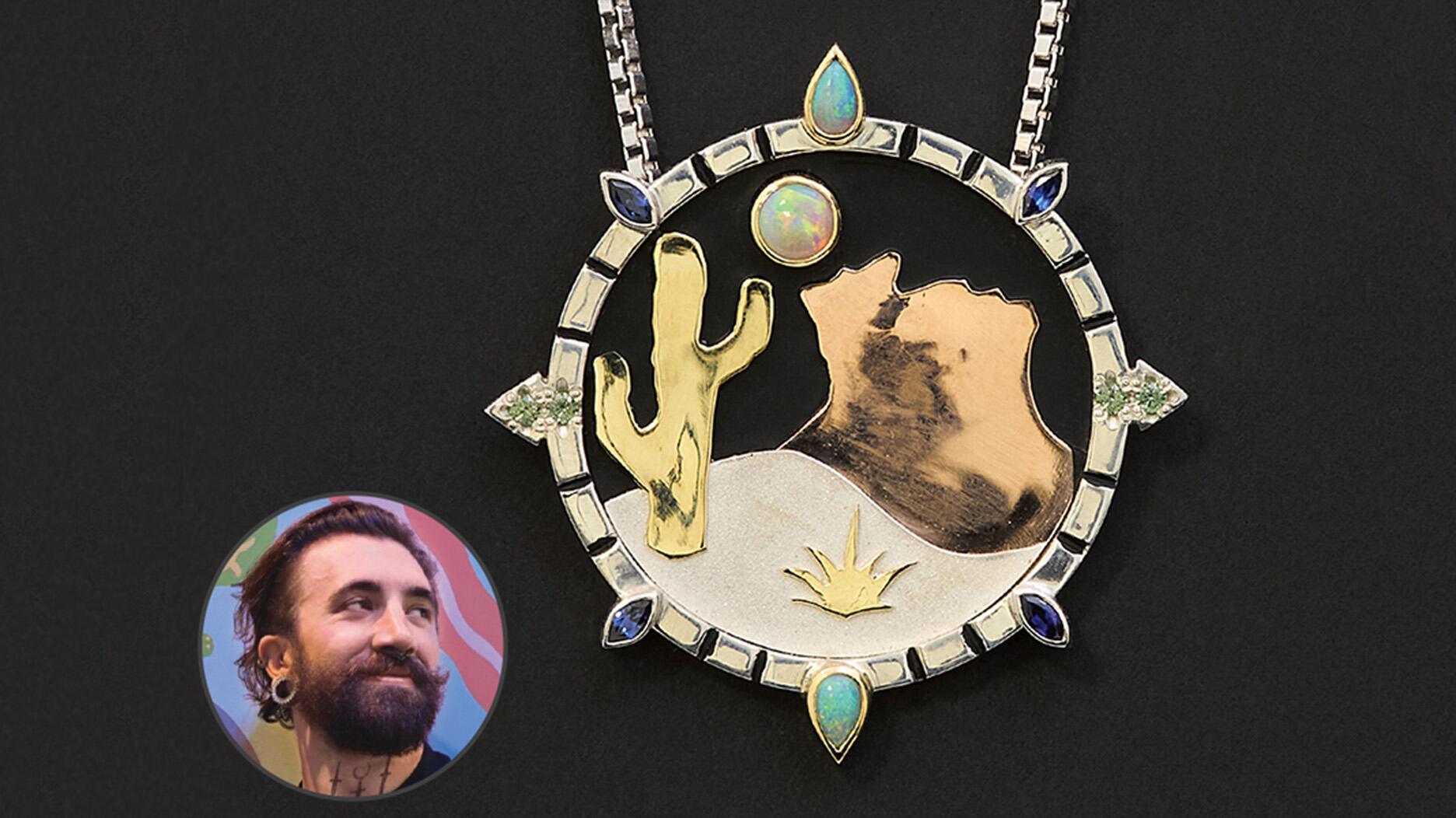Set in a Tiffany & Co. necklace, it sold for $4.2 million, the highest price and price per carat paid for a Paraíba tourmaline at auction.
7 Expectations for the Tucson Gem Shows
Exhibitors dish on the gemstone colors, qualities and cuts that will be hot in the desert.

New York—In two weeks, many in the industry will be packing their bags for the desert.
The gem, mineral and jewelry shows that take over Tucson in late January-early February now number more than 50, according to online guides, though most in the trade have a handful they frequent.
The American Gem Trade Association’s GemFair is slated for Feb. 5 to 10 in the Tucson Convention Center. A few changes have been made to the jewelry trade show this year, including new and expanded exhibits of gemstone jewelry designers in the upgraded Grand Ballroom.
GJX also is slated for Feb. 5 to 10, just across South Granada Avenue from GemFair.
There also are dozens of other shows across the city, including JCK Tucson at the JW Marriott Tucson Starr Pass Resort & Spa (running Feb. 6 to 9), JOGS (Jan. 31 to Feb. 11), and the Pueblo Gem & Mineral Show (Feb. 1 to 13).
National Jeweler asked a handful of gemstone dealers exhibiting at the upcoming shows what they’re expecting in terms of color, stone and pricing trends.
Here are seven things they noted.
1. Demand for red, pink, purple and even orange is hotter than ever.
This color trend has carried over from the past few years in Tucson, with exhibitors reporting warm hues of spinel, sapphire and garnet were flying out of their showcases.
It appears 2019 isn’t going to be any different.
Jeremy Chalchinsky of Color Source Gems said ever since morganite became popular, it has lifted pinks, oranges and “sunset colors” into the mainstream jewelry market.
“We’ve seen lots of demand for that, whether it’s imperial topaz, padparadscha sapphire or Malaya garnet,” he said. “While the trend seems to be leveling off a bit, we can expect the increased recognition to lead to greater sales down the road.”
He added that purple also has become popular, with a noticeable uptick in purple sapphire sales.
“Tucson will be the test as to whether that’s going to continue strong into the rest of 2019.”
Robert Van Wagoner of Beija-Flor Gems noted, too, that reds and pinks are still very popular for him, while Nomad’s Josh Saltzman told National Jeweler that anything with a red, pink or lavender color always is in demand.
For Out of Our Mines, “more earthy-toned gems” seem to be rapidly gaining popularity, Richard Shull said.
Last year in Tucson, the company sold a lot
2. Blues too.
Blue tones are so classic it’s not likely they’ll ever go out of style, but several exhibitors still are talking about how they expect blue gems to be hot in Tucson.
Van Wagoner said this is particularly true when it comes to the blues of a sapphire, or the “electric turquoise blues” of Paraiba tourmaline and the more budget-friendly Peruvian blue opal.
Saltzman of Nomad’s noted that fine aquamarine has been selling, a spike he attributed to the royal wedding (Meghan Markle wore Princess Diana’s emerald-cut aquamarine Asprey ring to the reception) and expects to continue this year.
He added that “lagoon” tourmaline—featuring a 50/50 mix of blue and green without any yellow tones—has been very popular in the last year. What’s more, there’ s very little of it on the market so he expects demand to continue.

3. The story of unique, rare and phenomenal stones continues.
In today’s market, unique and rare stones help designers and jewelry stores set themselves apart, and demand for gemstones that are hard to find continues to rise.
“Color’s really the place where stores are looking to set their individuality, and it’s where they can make money as well,” colored stone dealer Jeff Bilgore said, adding that he believes exotic, rare stones will do well this year.
Van Wagoner said foreign customers especially are focused on rare and unique stones, specifically cobalt blue spinel from Vietnam and a “screaming” pinkish-red spinel from the Man Sin mine in Mogok, Myanmar. (Some in the trade refer to this material as “jedi” spinel.)
Joining spinel in popularity among Van Wagoner’s buyers are Paraiba tourmaline, hyalite opal, Colorado rhodochrosite, red beryl and benitoite.
Saltzman also believes in spinel’s staying power, especially given how the supply issues in Tanzania over the past year—the Mahenge area was closed for much of the second half and the country instituted a ban on exporting rough—have limited the amount of material on the market even as demand stays high.
He also said the influence of social media is helping drive demand for lesser-known stones. Facebook and Instagram have allowed consumers to “discover” more, creating desire for rhodolite and Malaya garnet, bi-color gemstones and more.
Chalchinsky said Color Source Gems also has seen greater interest in unique gemstones that many consumers hadn’t heard of five years ago.
“That market is definitely growing, and Tucson is the place to find it.”
And, with the current tastes of new jewelry buyers and artists, Chalchinsky said there has been an increase in demand for spinel, tourmaline, zircon, and fancy or “parti” sapphires, reffering to those with two more colors.
They’re hoping these markets will continue to grow and spur new interest in colored stones.
4. A few specific factors will receive more attention.
Today’s discerning buyers are starting to look beyond just color.
This year, Van Wagoner predicted, buyers will pay more attention to treatments and their disclosure.
“Given how many treatments there are these days, disclosure is more important than ever, and retailers are increasingly concerned with how they will be able to present that information to their customers and to making sure they have all the information.”
BiIgore, meanwhile, is predicting even greater use of buzz words like “responsible sourcing,” “ethical sourcing,” and “sustainability,” both from exhibitors and from buyers looking for gems with a story.
Shull said as buyers look more for ethically sourced gems, stones with provenance will become a major staple in the industry, including American- and ethically-mined gems.
Chalchinsky, Saltzman and Shull are predicting a focus on cuts, albeit different kinds.
RELATED CONTENT: Meet the New Faces of JCK Tucson 2019Shull and Chalchinsky said cutting quality is becoming more important, with the latter attributing it to the increasing competition in jewelry and the ability of a quality cut to set a gemstone apart.
“Better cutting is a way to give stones the edge because quality cutting means better light return,” he said. “While always an integral part of the 4Cs, it’s starting to subtly become more important.”
Saltzman said Nomad’s sees high demand for bi-color gems cut in non-traditional styles, but also noted strong demand for traditional shapes and styles, like Asscher and emerald cuts, in all the gems the company supplies.
5. The two-tier market will continue.
What will become of the two-tier market that’s dominated the colored stone sector for a while, where expensive high-end stones as well as the lower end are selling with very little movement in the middle? According to these exhibitors, not much will change with it right now.
Van Wagoner said the higher end and lower end will both “really sell” in Tucson.
He also noted prices for mid-range goods will soften as the middle tier slowly dissipates; the retailers who were buying that material have moved down to the lower end of the market, toward goods such as beads.
Bilgore, too, thinks the two-tier market will continue into Tucson, with fine quality gemstones doing especially well, particularly when it comes to the fine spinel, rubies, sapphires and emeralds that have been popular.

6. Pricing should hold firm for fine goods.
High-end gemstones continue to sell so, not surprisingly, prices of fine material are expected to hold.
Van Wagoner said prices of lesser quality goods, meanwhile, will probably drop during the shows, and there likely will be some “screaming deals” to be found.
Overall, though, he expects prices to be up slightly, as does Nomad’s Saltzman and Shull from Out of Our Mines.
“I’m seeing pricing being similar to last year, with the exception of some rare stones that are no longer being produced,” Shull said. “They always seem to go up a bit each year.”
Bilgore predicted the same for Tucson: There will be firm pricing on fine goods, while exhibitors likely will be willing to negotiate on lower-end merchandise.
Chalchinsky said while many people have been returning from buying trips and reporting strong prices, he noted there are still great deals on loose stones and jewelry to be found.
“Prices should overall be consistent with last year, regardless,” he added.
7. There’s a lot in flux right now, but exhibitors still are optimistic.
Both in the United States and internationally, there are political situations that could affect buying activity, like the U.S. government shutdown, the trade war between the U.S. and China and the uncertainty surrounding Brexit.
Still, the exhibitors National Jeweler spoke with seemed to be optimistic about the shows in the desert.
“The current situation globally is a bit shaky overall, but we have continued to see solid demand from all our main markets, and I have heard from quite a few of our customers who are still planning to travel to Tucson to buy this year,” Saltzman said.
Tucson provides the perfect timing for jewelers to restock after the holiday season and re-evaluate inventory needs, Bilgore said.
“It’s an environment that’s happy and is so dynamic that people get excited by purchasing things that aren’t necessarily on their lists. I think that if people were going to spend anywhere, it will be in Tucson.”
Bilgore said many jewelers’ sales were up during the holiday season, even if only slightly, continuing a slow trend upward. And though he added that the current environment feels like post-election 2016 and provides an added unknown, stores might start out cautious in Tucson but end up buying more than expected.
Van Wagoner, meanwhile, said he thought the fourth quarter was weak for many jewelers, yet he believes they will be ready to spend when they get to the desert.
“I’m usually a little apprehensive about how the show is going to go. Historically, it’s been a pleasant surprise for me every time,” he said. “I’ve had a lot of people reaching out to me before, which is a good sign, but there are still a lot of variables right now.”
The Latest

The jeweler’s “Deep Freeze” display showcases its iconic jewelry designs frozen in a vintage icebox.

Take luxury gifting to new heights this holiday season with the jeweler’s showstopping 12-carat sphene ring.

How Jewelers of America’s 20 Under 40 are leading to ensure a brighter future for the jewelry industry.

In its annual report, Pinterest noted an increase in searches for brooches, heirloom jewelry, and ‘80s luxury.


Starting Jan. 1, customers can request the service for opal, peridot, and demantoid garnet.

The 111-year-old retailer celebrated the opening of its new location in Salem, New Hampshire, which is its third store in the state.

Roseco’s 704-page catalog showcases new lab-grown diamonds, findings, tools & more—available in print or interactive digital editions.

The new catalog features its most popular chains as well as new styles.

The filmmaker’s personal F.P. Journe “FFC” prototype was the star of Phillips’ recent record-setting watch auction in New York.

The new location in the Design District pays homage to Miami’s Art Deco heritage and its connection to the ocean.

Inflations, tariffs, and politics—including the government shutdown—were among consumers’ top concerns last month.

“Longtime favorite” presenters, as well as first-time speakers, will lead talks and workshops at the annual event in Tucson next year.

The sale of the 31.68-carat, sunset-hued stone was part of Sotheby’s first series of events and auctions in Abu Dhabi.

Most customers who walk into your store this month have made up their minds. Your job is to validate their choice, Emmanuel Raheb writes.

The collection features characters and motifs from Ukrainian folklore, including an enchanted mirror and a magic egg.

MatrixGold 3.11, the newest version of the jewelry design program, offers more flexibility, precision, and creative control.

The pavilion will be part of the 2026 JA New York Spring show, scheduled for March 15 to 17.

Kadet, a 1994 National Jeweler Retailer Hall of Fame inductee, helped grow the family-owned retailer in the Chicago area and beyond.

Billed as the world’s smallest wearable, Lumia Health’s new smart earrings have a health tracker subtly embedded in the back.
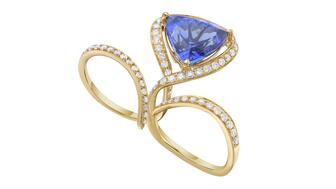
Don’t let those with December birthdays feel blue. Help them celebrate their month with blue zircon, turquoise, and tanzanite.
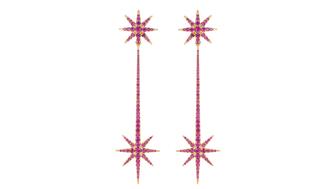
The new pink sapphire version of the piece dances with its wearer in the brand’s “Icons After Dark” holiday campaign.

A choice that’s generated a lot of commentary, Pantone says “Cloud Dancer” marks a fresh start and encourages relaxation and creativity.

The manufacturer’s holiday campaign features a gift guide filled with trending designs and jewelry that can be personalized.
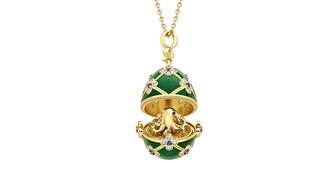
The man was charged with theft, accused of ingesting the necklace while in a jewelry store in Auckland, New Zealand.

The Florida independent expanded its store from 8,000 to 14,000 square feet, fulfilling the vision of its late co-founder, Jim Dunn.
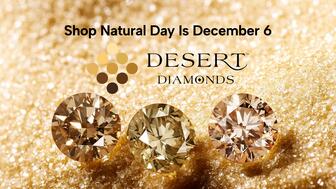
Sponsored by De Beers Group












